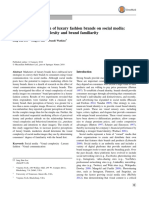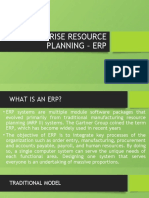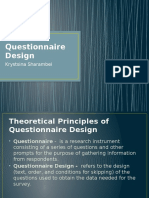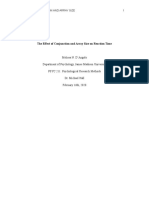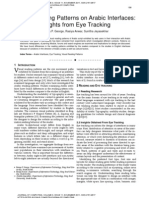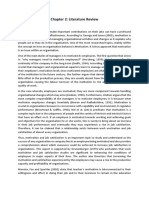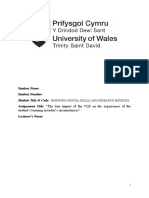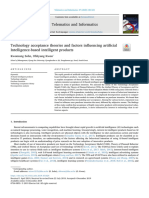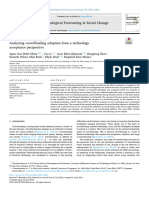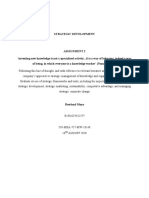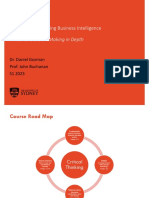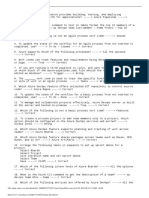Eye Tracking in Human-Computer
contents:-
Abstract
Introduction
History of eye tracking
Working of eye tracking
Research in eye tracking
Issues in eye tracking
Eye taking as an input device
Application
Privacy
Benefit of eye tracking
Drawbacks of eye tracking
Future trends in eye tracking
References
�Introduction
we introduce the reader to the basics of eye-movement
technology, and also present key aspects of practical guidance
to those who might be interested in using eye tracking in HCI
research, whether in usability-evaluation studies, or for
capturing people’s eye movements as an input mechanism to
drive system interaction. Second, we examine various ways in
which eye movements can be systematically measured to
examine interface usability.
�HISTORY
Many different methods have been used to track eye
movements since the use of eye tracking technology was first
pioneered in reading research over 100 years ago (Rayners &
Pollatsek, 1989). Electro-oculographic techniques, for example,
relied on electrodes mounted on the skin around the eye that
could measure differences in electric potential so as to detect
eye movements. These methods proved quite invasive, and
most modern eye tracking systems now use video images of the
eye to determine where a person is looking (i.e., their so-called
“point-of-regard”). Many distinguishing features of the eye can
be used to infer point-of-regard, such as corneal reflections
(known as Purkinje images), the iris-sclera boundary, and the
apparent pupil shape (Duchowski, 2003).
�WORKING OF EYE TRACKER
Most commercial eye-tracking systems available today measure
point-of-regard by the “corneal-reflection/pupil-centre” method
(Goldberg &Wichansky, 2003). These kinds of trackers usually
consist of a standard desktop computer with an infrared camera
mounted beneath (or next to) a display monitor, with image
processing software to locate and identify the features of the
eye used for tracking. In operation, infrared light from an LED
embedded in the infrared camera is first directed into the eye to
create strong reflections in target eye features to make them
easier to track (infrared light is used to avoid dazzling the user
with visible light).
� RESEARCH IN EYE TRACKING
What a person is looking at is assumed to indicate the thought “on
top of the stack” of cognitive processes (Just & Carpenter, 1976).
This “eye-mind” hypothesis means that eye-movement recordings
can provide a dynamic trace of where a person’s attention is being
directed in relation to a visual display. Measuring other aspects of
eye movements, such as fixations (moments when the eyes are
relatively stationary, taking in or “encoding” information), can also
reveal the amount of processing being applied to objects at the
point-of-regard. In practice, the process of inferring useful
information from eye-movement recordings involves the HCI
researcher defining “areas of interest” over certain parts of a
display or interface under evaluation, and analysing the eye
movements which fall within such areas. In this way, the visibility,
meaningfulness and placement of specific interface elements can
be objectively evaluated and the resulting findings can be used to
improve the design of the interface (Goldberg &Kotval, 1999).
�APPLICATIONS EYE TRACKING
COMMERCIAL APPLICATION
In recent years, the increased sophistication and accessibility of eye-
tracking technologies have generated a great deal of interest in the
commercial sector. Applications include web usability, advertising,
sponsorship, package design and automotive engineering. In
general, commercial eye-tracking studies function by presenting a
target stimulus to a sample of consumers while an eye tracker is
used to record the activity of the eye.
�BENEFITS OF EYE TRACKING
Following are the benefits of Eye Tracking Technology:
➨It increases computing and resource efficiency.
➨It helps to assess human conditions and behaviours.
➨It helps to learn from experts delivering skills.
➨It makes technology more intuitive.
�DRAWBACKS OF EYE TRACKING
Following are the drawbacks or disadvantages of Eye Tracking
Technology:
➨It is expensive technology due to costly hardware requirements.
➨It does not work with few users who wear contact lenses or have
long eye lashes.
➨It requires some calibration time before it gives satisfactory results.
Hence few users deviate themselves from using it.
�Eye-tracking studies in HCI are beginning to burgeon, and the
technique seems set to become an established addition to the
current battery of usability-testing methods employed by
commercial and academic HCI researchers. This continued growth
in the use of the method in HCI studies looks likely to continue as
the technology becomes increasingly more affordable, less
invasive, and easier to use. The future seems rich for eye tracking
and HCI.
�THANK YOU





